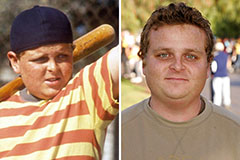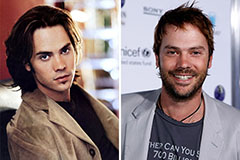A Summary of Spinal Column Problems That Typically Lead To Surgical Therapies
Back problems such as herniated discs, spine constriction, and degenerative disc illness frequently demand surgical treatments when conservative therapies fall short to minimize consistent signs and symptoms. Understanding the nuances of each condition and the corresponding surgical alternatives, such as discectomy or spine blend, is crucial for reliable administration.
Herniated Discs
Although lots of people with herniated discs might discover relief via traditional treatments, surgery ends up being an essential consideration when signs linger or get worse - best spine surgeons in st louis mo. A herniated disc happens when the soft inner gel of a spine disc protrudes via its outer layer, potentially leading and pressing close-by nerves to discomfort, numbness, or weakness in the extremities
Conservative management normally consists of physical treatment, discomfort medications, and corticosteroid injections, which aim to minimize swelling and improve feature. In situations where these methods fail to alleviate devastating signs and symptoms, surgical alternatives might be explored.
One of the most common operation for herniated discs is a discectomy, which involves the removal of the herniated part of the disc to ease pressure on the impacted nerve origin. In more extreme situations, spinal fusion may be necessary to stabilize the affected vertebrae.
Individuals are advised to discuss the possible threats and benefits of surgical treatment with their medical care supplier to make an educated decision. Eventually, the goal of any medical intervention is to bring back function, alleviate pain, and enhance general high quality of life for individuals experiencing herniated discs.
Back Constriction
Spine constriction happens when the rooms within the spinal column narrow, resulting in boosted stress on the spine cable and nerves. This condition can create in numerous areas of the spinal column, including the cervical and back areas, usually because of age-related adjustments, such as degenerative disc condition, arthritis, or enlarging of ligaments.
Clients with back constriction may provide with symptoms that include discomfort, numbness, tingling, or weakness, largely in the legs or arms. These symptoms can be intensified by activities that entail standing or strolling, commonly leading people to seek relief with conventional therapies like physical therapy, drugs, or epidural steroid injections.
However, when these non-surgical treatments fail to provide sufficient alleviation, surgical options might be considered. Typical medical treatments for spinal constriction include laminectomy, which entails the elimination of component of the vertebra to relieve stress, and spine combination, which supports the damaged location.
Spondylolisthesis
Spondylolisthesis occurs when one vertebra slips onward over one more, causing misalignment of the spine. This condition can result from different factors, including hereditary defects, injury, or degenerative modifications in the back. It is most generally observed in the lumbar region, especially at the L4-L5 and L5-S1 degrees.

When non-surgical strategies fall short to relieve signs and symptoms or when considerable nerve compression is present, surgical treatment might be required. Surgical alternatives can consist of back combination or decompression treatments, intended at recovering placement and reducing neurological signs and symptoms.
Degenerative Disc Disease

The problem can be detected with a combination of professional evaluation, imaging studies, and person background. When these methods fall short to provide ample alleviation, surgical interventions might be considered.
Surgical choices for DDD might consist of back fusion or fabricated disc replacement, intended at stabilizing the affected section and easing pain (best spine surgeons in st louis mo). Inevitably, the choice of therapy is individualized, thinking about the intensity of the condition, person health, and lifestyle aspects
Spinal Growths

Spine growths can arise from different elements, including genetic predisposition, environmental influences, and pre-existing medical conditions. Clients may present with an array of symptoms, including local discomfort, neurological deficiencies, weak point, or changes in bowel and bladder function, depending on the tumor's dimension and place.
Diagnosis usually includes imaging research studies such as MRI or CT scans, which help mark the growth's features and influence on surrounding structures. In assessing therapy choices, the growth's grade, area, and type are vital considerations. Surgical treatment may be warranted to relieve signs, acquire a biopsy, or remove the growth entirely. The objective of surgery is often to unwind neural elements and maintain the spine. Adjuvant treatments, including radiation or radiation treatment, may additionally be needed depending on the growth's nature. Early detection and treatment are essential for maximizing results in people with spinal lumps.
Final Thought
In recap, spine my link conditions such as herniated discs, back constriction, spondylolisthesis, degenerative disc disease, and spine growths often necessitate medical treatment as a result of their potential to trigger considerable discomfort and functional disability. While traditional treatments may provide short-term alleviation, surgical alternatives come to be crucial when signs get worse or linger. Prompt medical diagnosis and intervention play a critical role in restoring function and enhancing the quality of life for affected individuals, highlighting the value of thorough back treatment.
/0x0:512x512/prod01/channel_2/media/mccms/content-assets/academics/residencies-and-fellowships/spine-surgery-fellowship-minnesota/overview/final-512X512-OR710-2020-10-05_0007.jpg)
 Jason J. Richter Then & Now!
Jason J. Richter Then & Now! Patrick Renna Then & Now!
Patrick Renna Then & Now! Jurnee Smollett Then & Now!
Jurnee Smollett Then & Now! Barry Watson Then & Now!
Barry Watson Then & Now! Hailie Jade Scott Mathers Then & Now!
Hailie Jade Scott Mathers Then & Now!